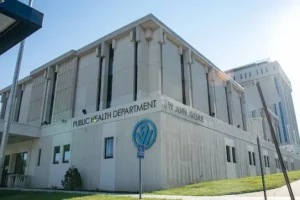A convergence of influenza, COVID-19, other viral respiratory pathogens, malaria, and severe nutritional deficiencies is now believed to be the root cause of what was initially perceived as a perplexing “mystery disease” in a secluded region of the Democratic Republic of the Congo (DRC), according to the World Health Organization (WHO).
Nearly 900 individuals have fallen ill, and 48 lives have been lost, predominantly among children under the age of five, as reported by the WHO, according to politico.com.
“This episode underscores the profound burden posed by routine infectious diseases—such as acute respiratory infections and malaria—particularly within fragile populations grappling with food insecurity,” stated the WHO, emphasizing the necessity for enhanced access to medical care and nutritional resources to combat escalating malnutrition in the area.
'Mystery disease' in Congo turned out to be malaria — and potentially, another disease https://t.co/iYBWDiOaHG
— Carol Duchesneau (@Duchesneau29130) December 25, 2024
Why This Matters
An alarming uptick in mortality rates within the western DRC region of Panzi earlier this month prompted national and international health authorities to raise the alarm, speculating about the emergence of a previously unidentified pathogen in an area critically underserved by healthcare infrastructure.
The DRC, plagued by entrenched poverty, chronic malnutrition, and recurring armed conflicts in various parts of the expansive nation, including Panzi, is simultaneously contending with its most severe outbreak of mpox—a rash-inducing viral infection—and measles, among other health challenges, as reported by politico.com.
Compounding the issue is the lack of robust infrastructure, which has impeded authorities from thoroughly investigating the outbreak’s origins and providing timely medical intervention for affected individuals.
“Frequent shortages of essential medications for treating common illnesses are a recurring challenge, and the lack of free healthcare services may hinder access to treatment for vulnerable populations, thereby amplifying the severity and fatality rates of otherwise manageable diseases,” the WHO noted.
What Lies Ahead
Local and global health specialists remain vigilant in their surveillance of the unfolding situation, as per the WHO’s updates, according to the reports by politico.com.
The organization has categorized the public health threat within the affected communities as severe, calling for a comprehensive strategy aimed at reducing mortality rates, bolstering nutritional interventions, and intensifying malaria prevention measures, among other critical actions.
Despite these challenges, the WHO assessed the likelihood of this outbreak extending to national, regional, or global scales as minimal.





